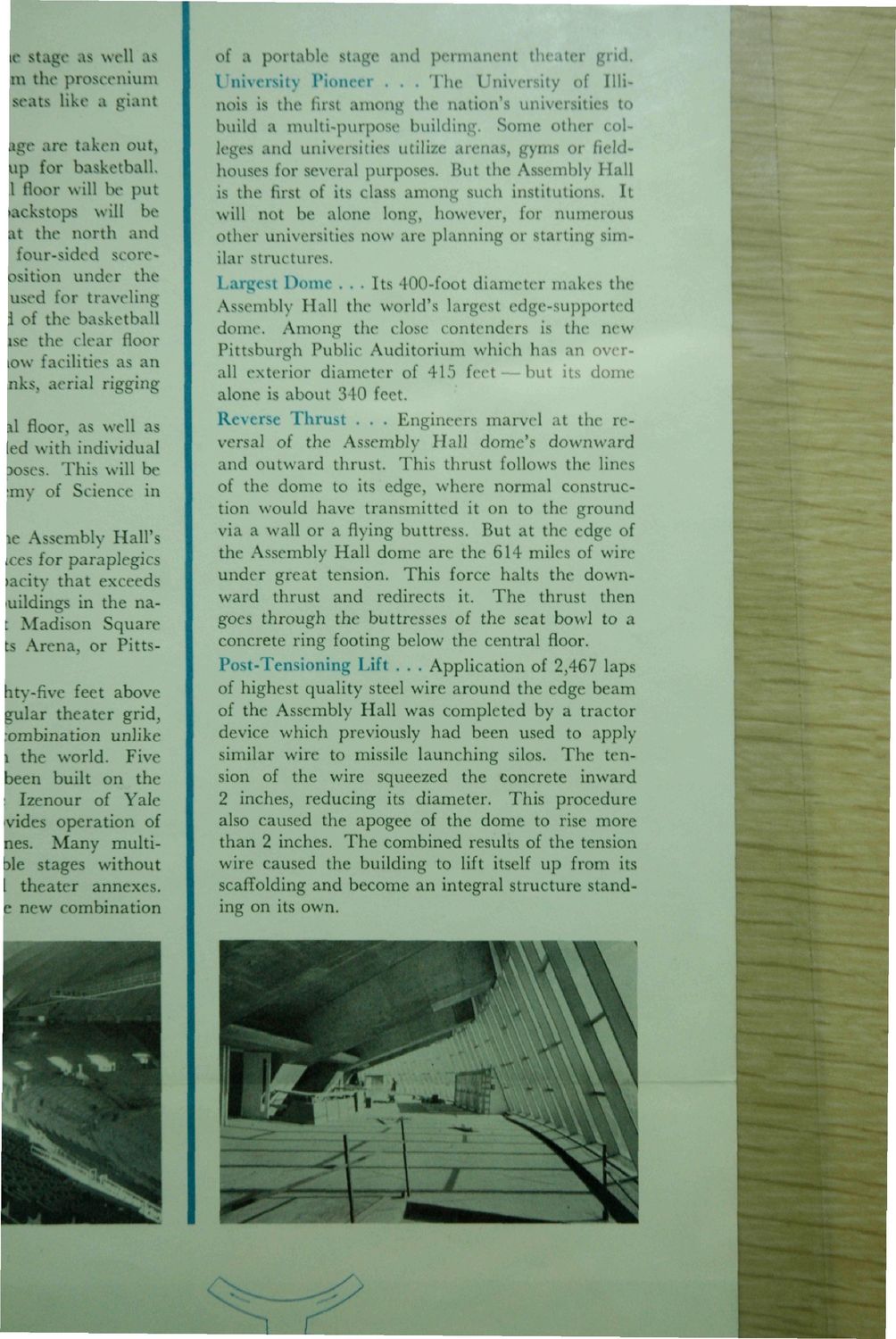| |
| |
Caption: Dedication - Assembly Hall
This is a reduced-resolution page image for fast online browsing.

EXTRACTED TEXT FROM PAGE:
of a portable stage and permanent theater grid. University Pioneer . . . The University of Illinois is the first among the nation's universities to build a multi-purpose building. Some other colleges and universities utilize arenas, gyms or fieldhouses for several purposes. But the Assembly Hall is the first of its class among such institutions. It will not be alone long, however, for numerous other universities now are planning or starting similar structures. Largest Dome . . . Its 400-foot diameter makes the Assembly Hall the world's largest edge-supported dome* Among the close contenders is the new Pittsburgh Public Auditorium which has an overall exterior diameter of 415 feet — but its dome alone is about 340 feet. Reverse Thrust . . . Engineers marvel at the reversal of the Assembly Hall dome's downward and outward thrust. This thrust follows the lines of the dome to its edge, where normal construction would have transmitted it on to the ground via a wall or a flying buttress. But at the edge of the Assembly Hall dome are the 614 miles of wire under great tension. This force halts the downward thrust and redirects it. The thrust then goes through the buttresses of the seat bowl to a concrete ring footing below the central floor. Post-Tensioning Lift. . . Application of 2,467 laps of highest quality steel wire around the edge beam of the Assembly Hall was completed by a tractor device which previously had been used to apply similar wire to missile launching silos. The tension of the wire squeezed the concrete inward 2 inches, reducing its diameter. This procedure also caused the apogee of the dome to rise more than 2 inches. The combined results of the tension wire caused the building to lift itself up from its scaffolding and become an integral structure standing on its own.
| |